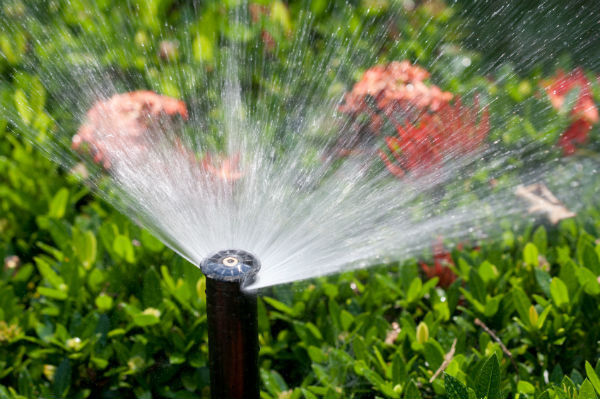Note: This is a new monthly feature provided by Shawn Novack, water conservation program manager with the Water Resources Association of San Benito County.
Dog days refers to the sultry days of summer. In the Northern Hemisphere, the dog days of summer are most commonly experienced in the months of July and August, which typically see the hottest summer temperatures. This also means it’s the time of year where our local landscapes use the most water. Outdoor irrigation accounted for almost 60% of residential water use this time of year before we were in drought! With the Emergency Water Conservation Regulations in place, we are only allowed to water two days per week. Therefore, every drop counts. Our local landscapes are a little tricky to irrigate with our clay soils being so dominant in most of the county. Clay soil doesn’t absorb water easily and it’s easy to produce runoff by overwatering. Runoff is a violation of the new regulations. So, let’s look at some ideas that allow you to water more efficiently and effectively without wasting water or violating the regulations.
Sprinkler Irrigation
Set each sprinkler irrigation station as follows for the hottest days of the year, generally in August:
- 3 times a day on your assigned watering day. Odd addresses can irrigate on Tuesday’s and Saturday’s. Even numbered addresses can irrigate on Wednesday’s and Sunday’s
- 4 minutes each watering cycle
- 1 hour in between each watering cycle
Applying too much water in one increment results in the ground reaching a saturation point, meaning any additional water will run off and be wasted.
Different types of grass and soil will require differing amounts of water. In order to determine how deeply the water is penetrating into the soil in your yard, all that’s needed is a shovel. Simply pick an area of the lawn that is irrigated and about 30 minutes after watering, dig a small hole and use your hand to determine how deeply the water has penetrated.
In most lawn and garden situations, it’s best if water is penetrating 6 to 8 inches beneath the surface of the soil. If the soil is still dry at this depth, then another cycle may be needed to encourage deep root growth.
Our community has really been doing a good job on conserving water. The state mandated that we reduce water use by 25% compared to water use for the same time period in 2013. In May of this year, water use was down compared with May 2013 by 29% in the Sunnyslope service area and 27% in the City of Hollister. In June of this year, water use was down compared to June 2013 by 34% in the Sunnyslope service area and 28% in the City of Hollister. Good job everyone!
However, beware the Dog Days of Summer when the days are hottest! If you need assistance on setting your irrigation controllers or think you have a leak, call the Water Resources Association of San Benito County (WRASBC). Our services are free and we have many rebates and programs to assist you in conserving water. Our Turf Removal Program has been expanded from 500 square feet to 1,000 square feet. This is where the WRASBC will pay $1 per square foot up to 1,000 square feet ($1,000) to remove turf from your yard. Our technician must measure the area of turf being removed BEFORE you start ripping out your turf (other rules apply and funds are limited). Turf or “grass” uses as much as 60 inches of water a year to keep it green and lush in our area. It’s one of the thirstiest plants in your landscape. But if you have dogs or kids and need a play area, turf is needed. Just limit the size of your turf areas to a size you actually use.
We only receive 11 to 13 inches of rain per year, on average, while we haven’t seen that much rain in a long time. It just makes sense to plant climate-appropriate plants. The WRASBC has information on climate-appropriate plants. For assistance or more information call 637-4378 or visit our website at: www.wrasbc.org
Shawn Novack has been the Water Conservation Program Manager with the Water Resources Association of San Benito County (WRASBC) since 2004. He worked at the Monterey Peninsula Water Management District before coming to San Benito County. He holds a certification with the Irrigation Association as a Certified Landscape Irrigation Auditor and is a certified as a Water Conservation Practitioner through the American Water Works Association. The WRASBC represents the City of Hollister, the City of San Juan Bautista, the Sunnyslope County Water District and the San Benito County Water District for all their water conservation and water resource protection programs.










